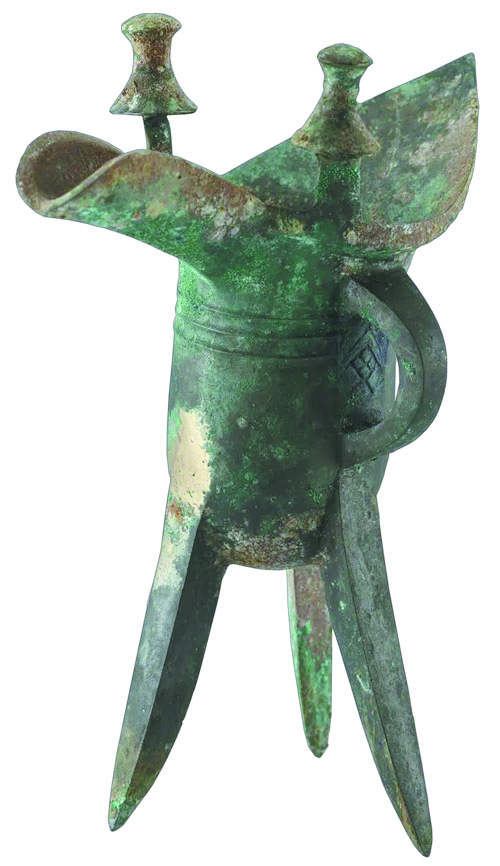

Due to the seriousness of the theft, a rescue excavation was approved by the National Cultural Heritage Administration. It was launched in June 2017 by the Shanxi archaeology institute in cooperation with archaeologists from Yuncheng city and Wenxi county.
Ma, who was in charge of the excavation, recalls the first time he saw the site. "There were more than a dozen large and small holes on the surface through which robbers got in, some of which were made with explosives," Ma says. "Everyone was overwhelmed by a sense of frustration, despair and anger."
As archaeologists speculated, several tombs within the complex were left empty, with only a few fragments of pottery and bronze remaining, causing irreversible damage to archaeological and historical research.
It was in October 2017 when the excavation team came upon a tomb in the easternmost part of the site that had not been damaged by robbers. As the team meticulously cleaned it up, the tomb turned out to be big, featuring sacrificial animals and a pit with chariots and horses.
Judging by the shape of the tomb, and those of the excavated ornaments and bronze items, archaeologists were able to ascertain that the site was from the late Shang Dynasty, exactly as experts had predicted during the preliminary investigation.
"This made everyone exceptionally excited, because in the southern Shanxi region, the late Shang period had remained a blank spot," says Bai Shuzhang, an expert who joined the excavation.